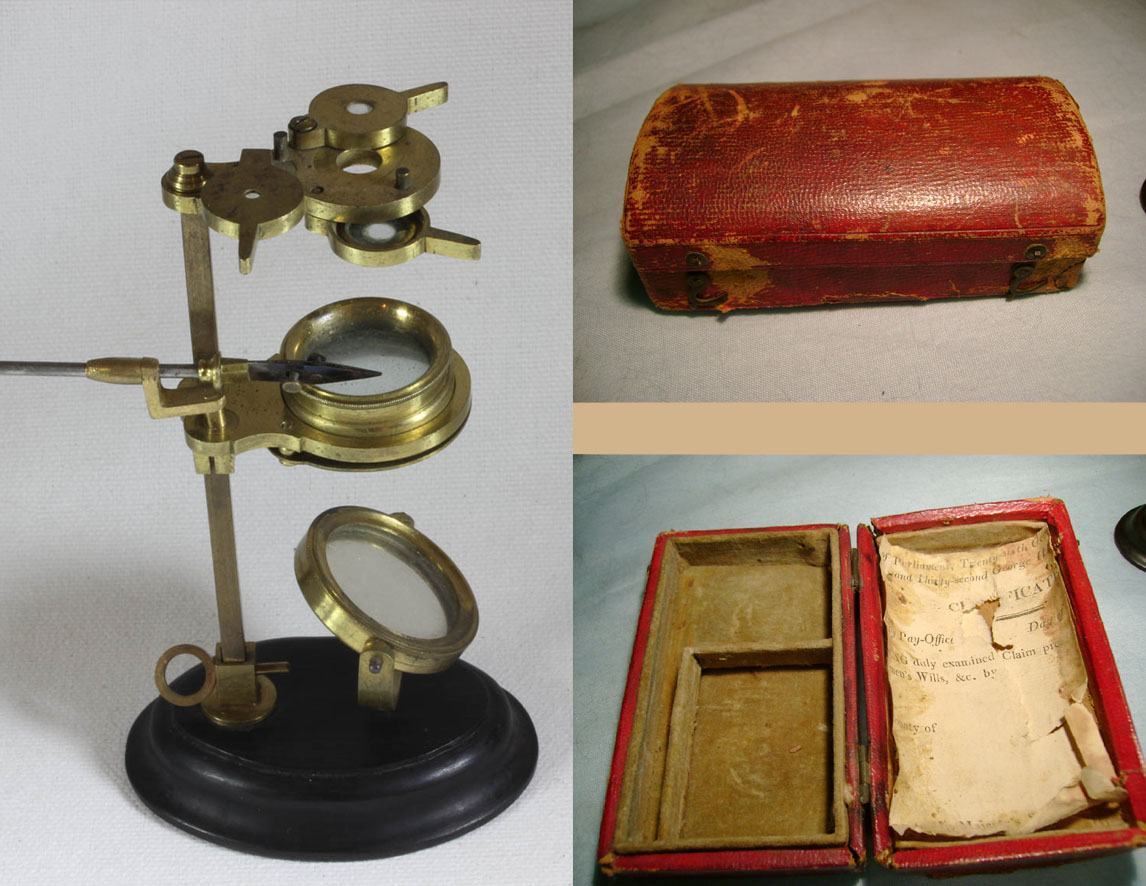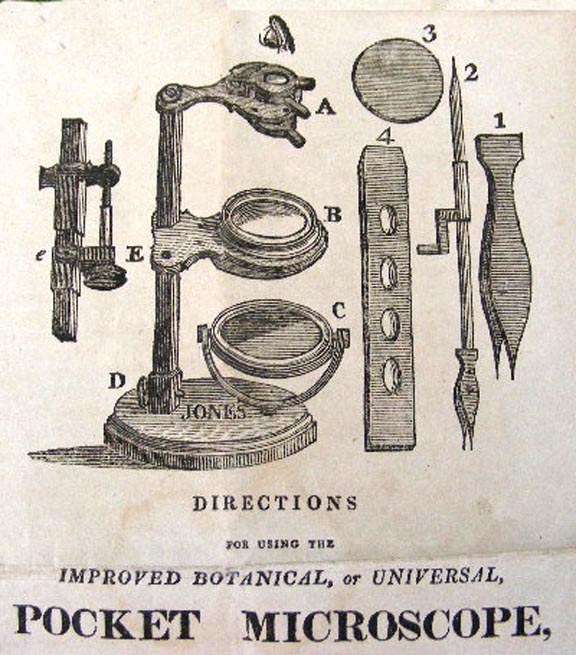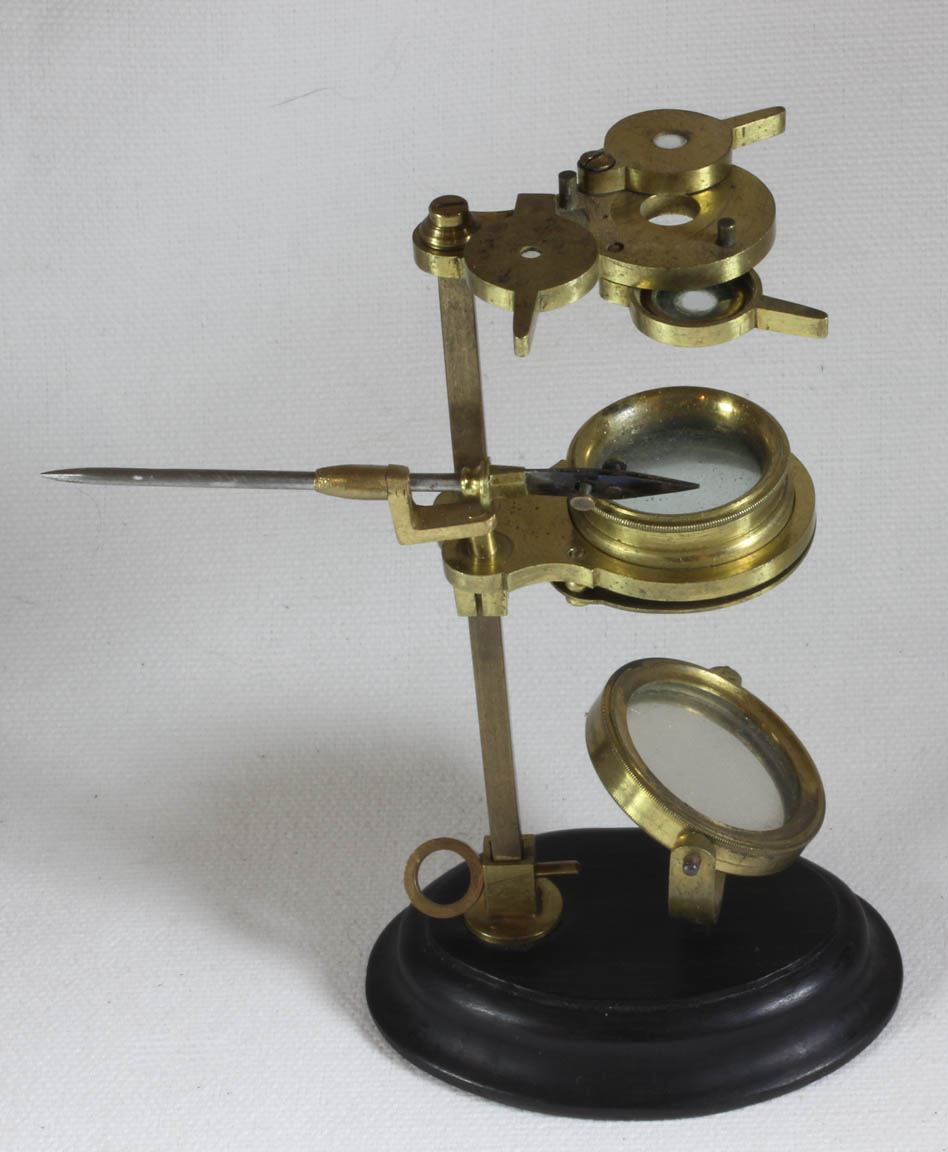MICROSCOPE-ANTIQUES.COM © 2013-15.
W. & S JONES 'IMPROVED BOTANICAL or UNIVERSAL POCKET MICROSCOPE':
c. 1800
Unsigned
Serial Number: None
| DESCRIPTION | HISTORY |

| DESCRIPTION | HISTORY |

 The instrument is made of brass and has an ebony foot. It is about 4.5 inches high. A brass fitting to hold the pillar is attached to the foot, held by a round nut underneath. Several examples of this instrument signed by Jones are known; they are signed by a
stamp impressed into the wooden base. The base of this example is a modern replacement and therefore has no stamp. The instrument is otherwise identical to another complete (and signed) example in a private collection, and hence the attribution to Jones. The stage forceps and some of the support parts are also modern replacements, but were contructed to identical specifications of the originals that I have been able to examine in detail. The stage is focused by pushing it up or down on the pillar. The stage has a hole to accomodate the stage forceps. There is also a live box which
fits into the stage. The various lenses can swing in or out of the optical axis to be used singly or in combination. The original red-leather covered case is lined with pale green velour on the bottom and silk on the inside of the lid, and is the same as most other known examples signed by W & S Jones. The pillar attaches to the brass base, fitting through a square hole and held in place by a small pin with a ring handle. There are three objectives, two above and one below a brass plate with an aperture, presumably to limit aberration. When this instrument was received, the lid was lined with a paper referring to George III (right) who was King from 1760 to 1820 when he died.
The instrument is made of brass and has an ebony foot. It is about 4.5 inches high. A brass fitting to hold the pillar is attached to the foot, held by a round nut underneath. Several examples of this instrument signed by Jones are known; they are signed by a
stamp impressed into the wooden base. The base of this example is a modern replacement and therefore has no stamp. The instrument is otherwise identical to another complete (and signed) example in a private collection, and hence the attribution to Jones. The stage forceps and some of the support parts are also modern replacements, but were contructed to identical specifications of the originals that I have been able to examine in detail. The stage is focused by pushing it up or down on the pillar. The stage has a hole to accomodate the stage forceps. There is also a live box which
fits into the stage. The various lenses can swing in or out of the optical axis to be used singly or in combination. The original red-leather covered case is lined with pale green velour on the bottom and silk on the inside of the lid, and is the same as most other known examples signed by W & S Jones. The pillar attaches to the brass base, fitting through a square hole and held in place by a small pin with a ring handle. There are three objectives, two above and one below a brass plate with an aperture, presumably to limit aberration. When this instrument was received, the lid was lined with a paper referring to George III (right) who was King from 1760 to 1820 when he died. 

censustaken by Joe Zeligs; I am grateful to Joe for that information. Variations on this theme soon appeared, and included ones with screw-in stacking lenses, rack and pinion focusing, and a type attaching to the inside of the case; these variations taken together may have been the inspiration for the Cary-Gould Pocket Microscope which appeared by the 1820's.